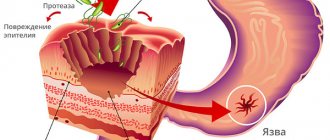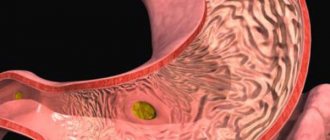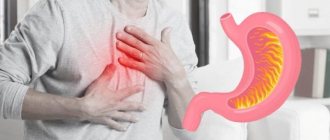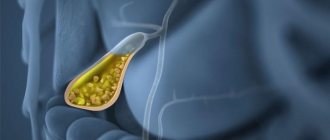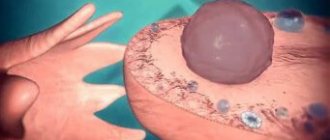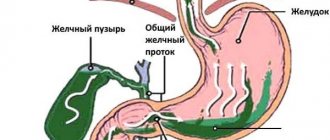A duodenal ulcer is a chronic disease that is a defect in the lining of the organ. Unlike erosive formation, it is deeper, affecting the submucosal and muscle tissue. Ulcerative wounds can be of different sizes - from a match head to a large apple. The prevalence of the pathology is quite high and in some regions is 15 percent. The disease occurs more often in men. Folk remedies are very popular in the treatment of duodenal ulcers. With their help, it is possible to accelerate tissue healing and normalize digestion processes.
Traditional medicine
To treat problems associated with the digestive organs, along with traditional ones, there are many ancient, time-tested methods. They are widely used along with drug therapy and dietary nutrition. The role of folk remedies for duodenal ulcers comes down to relieving inflammatory processes, improving tissue regeneration, and restoring the normal functioning of the organ. Treatment with folk remedies includes a huge number of recipes, some of which are especially effective.
Sea buckthorn oil
Sea buckthorn has an excellent healing effect. The oil envelops the affected area of the bulb and body of the duodenum, accelerating the restoration of the mucosa. There are various options for its use:
- In the morning, waking up and without getting out of bed, drink a spoonful of sea buckthorn oil. They continue to lie down for an hour, constantly changing their position. A total of 200 ml of product is required per course. If heartburn occurs, it can be relieved with a soda solution.
- For preventive purposes, it is recommended to eat a tablespoon of honey every morning, washing it down with a sip of sea buckthorn oil after 25 minutes. The duration of the course is one year.
- Sea buckthorn oil mixed with 2% soda solution. Take one teaspoon of oil per 50 ml of liquid.
Sea buckthorn oil is easy to make on your own. After squeezing out the berry juice, the remaining peel and seeds are thoroughly dried and ground in a coffee grinder. The resulting powder is poured with olive oil and infused, stirring occasionally. After 3 weeks, the oil is ready and can be used for duodenal ulcers.
The plant is called “home healer” and is famous for its medicinal properties. It is an effective folk remedy for treating duodenal ulcers. Grind the leaves of a three-year-old plant by passing through a meat grinder. Add honey and butter, 100 g each, to 300 g of the resulting slurry. Pour in a tablespoon of Cahors and place the mixture in a water bath until it melts completely. Take a spoon half an hour before meals. You can take this medicine with milk or soda solution. The course of admission is 1 month. After a 10-day break, repeat.
An easier way to cure an ulcer is to thoroughly mix equal parts of aloe, honey, and butter. Take one spoon three times a day before meals.
Another treatment regimen using aloe involves a combination of several products at once - a raw egg, honey (a teaspoon), a small piece of aloe without peel and a spoonful of sea buckthorn oil. They must be taken in the order listed with a time interval of 5 minutes. Eating – 30 minutes after drinking sea buckthorn oil. Honey has an antibacterial effect, aloe is excellent for healing wounds, oil helps get rid of pain, and protects the intestinal mucosa. By interacting, the products enhance each other’s effects.
Drug treatment
Painkillers - Medicines can help relieve pain. The most recommended are:
- Papaverine;
- No-shpa;
- Drotaverine.
Antacids - Designed to restore acidity:
- Omeprazole;
- Almagel.
Enveloping tablets - They are prescribed to protect the mucous membrane of the duodenum and stomach. Effective are:
- De-Nol;
- Vis-Nol.
Antibiotics - If Helicobacter is present, the following is prescribed:
- Flemoxin solutab.
Motility stimulants - Medicines help increase intestinal motility:
- Maalox;
- Domperidone.
Anticholinergics - Allow you to reduce or completely eliminate unpleasant sensations. These include:
- Gastrocepin;
- Atropine.
Another article on this topic: Where is the pancreas located?
Antacids and enterosorbents - Have protective properties, protecting the duodenal mucosa from damage. These are drugs such as:
- Enterosgel;
- Phosphalugel.
Anti-inflammatory - Have a healing effect and have an anti-inflammatory effect:
- Methyluracil;
- Duogastron.
Dopamine blockers - Reduce vomiting and improve motor skills:
- Raglan;
- Cerucal.
Sedatives - Medicines that have a sedative effect:
- Valerian;
- Sedavit;
- Tozepam;
- Phenozepam.
Decoctions and tinctures
You can treat duodenal ulcers with folk remedies using various decoctions and tinctures based on herbs and other ingredients. Here are some good and affordable recipes.
In an enamel-coated bowl, mix dried marshmallow and elecampane roots; crushed licorice and yarrow stems; color of calendula, chamomile, and blueberry, taking a couple of teaspoons of each ingredient. Then all this is poured into a thermos, filled with a liter of boiling water and left for about an hour.
You need to drink the infusion 30 minutes before a meal, half a glass. The product is an excellent help for patients whose gastric juice secretes more than normal and has increased acidity.
A tablespoon of calendula flowers is combined with one-fourth of the same spoon of crushed golden mustache and poured with four hundred milliliters of boiling water. Leave for about forty minutes, thoroughly wrapping the container. Take one or two tbsp. l. one hour before breakfast, lunch and dinner.
GALINA SAVINA: “How easy it is to cure a stomach ulcer at home in 1 month. A proven method is to write down the recipe. » Read more >>
The medicine can relieve the exacerbation of the disease. Raw potatoes without skins are boiled and filtered. The vegetable broth is poured into a separate container and drunk three times a day, 100 grams each.
Fully or partially limited products
- Avoid coarse vegetables rich in fiber (white cabbage, radishes, turnips, beans, peas, rutabaga), as well as raw fruits with peels.
- Sorrel, dill, parsley, spinach, and onions are excluded from vegetables and herbs, as they contain large amounts of organic acids or irritating essential oils. Mushrooms are prohibited as a difficult to digest product.
- Products with connective tissue (meaning cartilage, skin and veins).
- Fatty pork, animal fats, duck, lamb, canned meat, goose, fatty fish, smoked meats, canned fish.
- Highly extractive broths and strong decoctions of vegetables, cabbage soup, okroshka and borscht. Pickled and pickled vegetables, canned vegetables - all these products cause an increase in secretion.
- For a long time (up to six months), millet, barley, pearl barley and corn cereals are excluded, as they are difficult to digest.
- All sauces and seasonings that irritate the mucous membranes - tomato sauce, horseradish, meat sauce, mustard, mayonnaise, pepper, vinegar, horseradish.
- Fried and hard-boiled eggs take a long time to digest and are poorly absorbed, so they are excluded from the diet.
- You cannot eat fresh bread and pastries, puff pastry products, chocolate, dried fruits, or ice cream.
- Sour fruits and berries are excluded as products that stimulate secretion.
Table of prohibited products
| Proteins, g | Fats, g | Carbohydrates, g | Calories, kcal | |
Vegetables and greens | ||||
| spicy vegetables | 2,8 | 0,5 | 5,3 | 36 |
| vegetables legumes | 9,1 | 1,6 | 27,0 | 168 |
| canned vegetables | 1,5 | 0,2 | 5,5 | 30 |
| stewed vegetables (fried) | 2,0 | 6,8 | 8,0 | 106 |
| daikon | 1,2 | 0,0 | 4,1 | 21 |
| cabbage | 1,8 | 0,1 | 4,7 | 27 |
| cucumbers | 0,8 | 0,1 | 2,8 | 15 |
| radish | 1,2 | 0,1 | 3,4 | 19 |
| white radish | 1,4 | 0,0 | 4,1 | 21 |
| turnip | 1,5 | 0,1 | 6,2 | 30 |
| horseradish | 3,2 | 0,4 | 10,5 | 56 |
| garlic | 6,5 | 0,5 | 29,9 | 143 |
| sorrel | 1,5 | 0,3 | 2,9 | 19 |
Mushrooms | ||||
| mushrooms | 3,5 | 2,0 | 2,5 | 30 |
Cereals and porridges | ||||
| corn grits | 8,3 | 1,2 | 75,0 | 337 |
| pearl barley | 9,3 | 1,1 | 73,7 | 320 |
| wheat bran | 15,1 | 3,8 | 53,6 | 296 |
| millet cereal | 11,5 | 3,3 | 69,3 | 348 |
| barley grits | 10,4 | 1,3 | 66,3 | 324 |
Flour and pasta | ||||
| pasta | 10,4 | 1,1 | 69,7 | 337 |
Bakery products | ||||
| oatmeal bread | 10,1 | 5,4 | 49,0 | 289 |
| Rye bread | 6,6 | 1,2 | 34,2 | 165 |
| bran bread | 7,5 | 1,3 | 45,2 | 227 |
| doctor's bread | 8,2 | 2,6 | 46,3 | 242 |
| whole grain bread | 10,1 | 2,3 | 57,1 | 295 |
Confectionery | ||||
| jam | 0,3 | 0,2 | 63,0 | 263 |
| candies | 4,3 | 19,8 | 67,5 | 453 |
| pastry cream | 0,2 | 26,0 | 16,5 | 300 |
| butter cookies | 10,4 | 5,2 | 76,8 | 458 |
Ice cream | ||||
| ice cream | 3,7 | 6,9 | 22,1 | 189 |
Cakes | ||||
| cake | 4,4 | 23,4 | 45,2 | 407 |
Chocolate | ||||
| chocolate | 5,4 | 35,3 | 56,5 | 544 |
Raw materials and seasonings | ||||
| mustard | 5,7 | 6,4 | 22,0 | 162 |
| ketchup | 1,8 | 1,0 | 22,2 | 93 |
| mayonnaise | 2,4 | 67,0 | 3,9 | 627 |
| ground black pepper | 10,4 | 3,3 | 38,7 | 251 |
| chilli | 2,0 | 0,2 | 9,5 | 40 |
Meat products | ||||
| pork | 16,0 | 21,6 | 0,0 | 259 |
Sausages | ||||
| dry-cured sausage | 24,1 | 38,3 | 1,0 | 455 |
| sausages | 12,3 | 25,3 | 0,0 | 277 |
Bird | ||||
| smoked chicken | 27,5 | 8,2 | 0,0 | 184 |
| duck | 16,5 | 61,2 | 0,0 | 346 |
| smoked duck | 19,0 | 28,4 | 0,0 | 337 |
| goose | 16,1 | 33,3 | 0,0 | 364 |
Fish and seafood | ||||
| dried fish | 17,5 | 4,6 | 0,0 | 139 |
| smoked fish | 26,8 | 9,9 | 0,0 | 196 |
| canned fish | 17,5 | 2,0 | 0,0 | 88 |
Oils and fats | ||||
| creamy margarine | 0,5 | 82,0 | 0,0 | 745 |
| animal fat | 0,0 | 99,7 | 0,0 | 897 |
| cooking fat | 0,0 | 99,7 | 0,0 | 897 |
Non-alcoholic drinks | ||||
| black tea | 20,0 | 5,1 | 6,9 | 152 |
* data is per 100 g of product
Oils
Treatment of duodenal ulcers using oils is quite effective. Folk recipes offer:
- mix a teaspoon of sea buckthorn oil with 0.05 liters of a two percent soda solution and take the drug forty minutes before meals three times a day (treatment duration is one month);
- drink a teaspoon of nut butter thirty minutes before your first meal and two hours after dinner. The course of treatment is three weeks, then a ten-day break, and then another course;
- take a teaspoon of sea buckthorn oil in the morning on an empty stomach to relieve inflammation of the intestinal mucosa and rid it of bacteria;
- Drink a tablespoon of milk thistle or calendula oil before bed. The first plant promotes rapid healing of duodenal ulcers, and the second reduces the risk of scarring;
- three times a day, 30 minutes before starting a meal, drink 12 ml of chamomile oil, which is an excellent analgesic, disinfectant and anti-inflammatory agent.
Symptoms of the disease
Symptoms of inflammation of the duodenum are mild. They are easy to miss, attributing deterioration in well-being to general malaise or overeating. After some time, the symptoms intensify.
What you should be wary of:
- indigestion – reluctance to eat or, conversely, constant hunger;
- constant belching, heartburn;
- flatulence, stool disorder;
- hunger nausea;
- periodic mild pain (often not felt at all);
- general weakness of the body.
During an endoscopic examination, a symptom of semolina may be observed, which is often diagnosed with inflammation of the duodenum. It appears in the form of small dots on the mucous membrane of the digestive organ.
Solutions
Traditional treatment of duodenal ulcers using solutions is carried out as follows:
- Stir 35 grams of honey in a glass of boiled water, cooled to 35-40 degrees, and take 1.5 hours before meals if the acidity is high, and ten minutes if the acidity is low. The duration of treatment is two months;
- Dilute 50 drops of twenty percent alcohol tincture of propolis in a glass of water and drink the solution 60 minutes before meals three times a day. The course of treatment is twenty days. The break is eleven days, and then another course.
Traditional medicine knows how to treat duodenal ulcers with various juices. Here are some tips from healers.
- Take a third of a glass of beet juice three times a day twenty minutes before meals. Duration of treatment – 10 days. Three courses are required per year.
- Squeeze the juice out of two kilograms of fresh white cabbage and dilute it to improve the taste with celery juice in a ratio of three to one (you can replace the latter with two tablespoons of tomato, pineapple or lemon juice). Take 250 milligrams in the morning before breakfast. The drink should be stored in the refrigerator.
- The celandine along with the root is crushed and ground in a meat grinder. A liter of the resulting juice is filled with the same amount of moonshine. All this is infused for three weeks. Take “fortified” celandine, one tablespoon along with a dessert spoon of olive oil three times a day. Duration of treatment – 3 weeks. In total, you need to complete three courses with breaks of ten days. This recipe is effective in treating stomach and duodenal ulcers.
- Take 12 ml of plantain juice three times a day before meals. The course of treatment is 120 days.
Features of the gut
The peculiarity of the duodenum is that the pancreatic duct flows into it, which injects enzymes - digestive enzymes, which consist of a complex of ribose and protein molecules that help break down food, and thereby speed up the digestive processes. In case of illness, this significantly affects the state of health, since it is necessary to take measures to reduce acidity and release this substance in order to increase the time of intestinal regeneration. Proper nutrition for duodenitis helps reduce acidity. Thus, removing irritability.
The bile duct also flows into the duodenum. It emulsifies fats, transforming them into a state in which they will be absorbed by the body rather than excreted. Simply put, they soften and become accessible to enzymes.
And all these enzymes enter the intestine we are considering. When suffering from duodenitis, frequent heartburn and a bitter taste in the mouth can also serve as a signal.
If food with enzymes does not pass through a small area, only twelve fingers long, then the entire digestive process will stop. Such cases are sometimes called “gastric arrest.” It turns out that a small area starts the whole process, and that is why a correctly and competently selected diet for duodenitis is so important.
How can you get duodenitis? There is a very common myth that this type of disease can cause stress. But in 1984 this assumption was refuted. This disease can be caused by both poor nutrition and the gram-negative bacterium Helicobacter Pylori.
When diagnosed with duodenitis, cholecystitis develops, and, as a rule, pancreatitis. If the intestine becomes inflamed, the pressure in the pancreas increases and inflammation begins. The same thing happens in the gallbladder system. This is a single zone of vital activity of the digestive system, the so-called “conglomerate of organs”.
Mixtures
The following mixtures help against duodenal ulcers:
- dissolve one gram of mumiyo in twenty grams of cow's milk and take the product in the morning on an empty stomach, and also in the evening before bed;
- mix one hundred and fifty grams of propolis with 1 kg of ghee. Take the product before meals, a teaspoon;
- Mix 0.5 kg of honey with 1.5 liters of olive oil and juice squeezed from two lemons. Take 1 tbsp three times a day. l.
Remove the seeds from the ripe pumpkin fruit and then chop it into cubes. Soak the chopped vegetable in milk (for every 0.25 kg - a liter). Place the container in a preheated oven and simmer the pumpkin until soft. It is then removed from the milk and turned into a paste using a fork. Take one hundred grams of pumpkin three times a day 30 minutes before meals.
In the evening, fry three tablespoons of raw buckwheat in a frying pan, pour in 10 g of hot boiled water. Leave the mixture covered overnight, wrapping the container well. In the morning, use it as breakfast.
Physiotherapy for duodenal inflammation
The use of physiotherapeutic procedures will help cure the disease. This method is used when duodenal disease is not in the acute phase.
Most often, the doctor recommends the following activities:
- ultrasound treatment;
- magnetic therapy;
- diadynamic therapy;
- warming up with the use of drugs in the epigestral zone.
Other folk recipes
Honey and butter help a lot. To make such a product you need to melt 200 grams. butter and the same amount of honey. The mixture must be cooked until it turns brown. Usually forty minutes is enough for this. Take it 1 tbsp in the morning before breakfast.
Another effective remedy is potato juice. You need to grate the vegetable and squeeze out the juice. Take fifteen minutes before meals. Course – 2 weeks. To enhance the effect, you can add 2-3 drops of novocaine to the juice.
It should be remembered that before using any methods of traditional medicine, you must consult with your doctor.
There are no universal remedies; if for one patient one of them becomes a panacea, then the same medicine can cause irreparable harm to another.
You should be especially careful with tinctures containing alcohol, which is known to irritate the mucous membranes. No matter how enthusiastic the reviews of people who have tried such remedies are, consulting a doctor is essential.
Agave continues to tell how to treat duodenitis at home using folk remedies. The disease is serious, and therefore it is important to treat it as such.
Once the doctor has announced the diagnosis, you need to not only stick to the diet. In parallel with the prescriptions, treat with herbs, juices, and honey.
Authorized Products
- Lean meat (beef, pork, chicken, turkey) is used to prepare steamed and boiled dishes. These can be cutlets, dumplings, puree, soufflé, zrazy, meatballs and beef stroganoff (the meat is first boiled), or oven-baked meat.
- Low-fat fish is allowed in boiled, baked or chopped form (cutlets, meatballs, meatballs, zrazy). The skin should be removed from the fish.
- The first courses are prepared in vegetable broth with well-cooked and pureed cereals and vegetables.
- You can prepare milk soups from thin vermicelli, soups with the addition of pureed meat.
- Additionally, egg-milk mixture and butter are added to soups.
- The allowed cereals are rice, semolina, buckwheat or oatmeal. Porridge is cooked in milk or water, and you need to boil it well and grind it (buckwheat can be pureed). You can eat boiled thin vermicelli and noodles. Puddings are made from boiled and well-mashed cereals, adding cottage cheese and baking without a pronounced crust.
- Dried or stale wheat bread. You can eat biscuits, low-fat cookies and, rarely, baked pies (the filling is made from cottage cheese, peeled apples, jam, boiled meat or fish).
- Potatoes, beets, green peas, cauliflower are added to soups, and also served as a side dish, boiled and pureed. Pumpkin and zucchini can be eaten raw, as they are low in fiber. Butter and vegetable oils are added to prepared vegetable dishes.
- Milk and non-acidic fermented milk products can be consumed in their natural form. Milk and cream are added when preparing porridges and cream soups. Fresh non-sour cottage cheese can be eaten in its natural form or used to make casseroles, cheesecakes (in the oven), puddings and lazy dumplings. Mild cheese in grated form is introduced into the diet.
- Twice a week you are allowed to eat soft-boiled eggs or omelettes.
- Desserts are prepared from pureed berries (puree, jelly, sambuca, jelly, compotes); all sweet berries and fruits can be consumed in baked form. Milk jelly, non-sour jam, meringues, marshmallows, marshmallows, and honey are allowed. Fruit juices, tea with milk or cream, rosehip infusion, weak coffee with cream.
Table of permitted products
| Proteins, g | Fats, g | Carbohydrates, g | Calories, kcal | |
Vegetables and greens | ||||
| cauliflower | 2,5 | 0,3 | 5,4 | 30 |
| potato | 2,0 | 0,4 | 18,1 | 80 |
| carrot | 1,3 | 0,1 | 6,9 | 32 |
| beet | 1,5 | 0,1 | 8,8 | 40 |
Cereals and porridges | ||||
| buckwheat (kernel) | 12,6 | 3,3 | 62,1 | 313 |
| semolina | 10,3 | 1,0 | 73,3 | 328 |
| cereals | 11,9 | 7,2 | 69,3 | 366 |
| white rice | 6,7 | 0,7 | 78,9 | 344 |
Bakery products | ||||
| white bread crackers | 11,2 | 1,4 | 72,2 | 331 |
| wheat bread | 8,1 | 1,0 | 48,8 | 242 |
Confectionery | ||||
| jelly | 2,7 | 0,0 | 17,9 | 79 |
Raw materials and seasonings | ||||
| honey | 0,8 | 0,0 | 81,5 | 329 |
| sugar | 0,0 | 0,0 | 99,7 | 398 |
| milk sauce | 2,0 | 7,1 | 5,2 | 84 |
| sour cream sauce | 1,9 | 5,7 | 5,2 | 78 |
Dairy | ||||
| milk | 3,2 | 3,6 | 4,8 | 64 |
| kefir | 3,4 | 2,0 | 4,7 | 51 |
| cream | 2,8 | 20,0 | 3,7 | 205 |
| curdled milk | 2,9 | 2,5 | 4,1 | 53 |
Cheeses and cottage cheese | ||||
| cottage cheese | 17,2 | 5,0 | 1,8 | 121 |
Meat products | ||||
| boiled beef | 25,8 | 16,8 | 0,0 | 254 |
| boiled veal | 30,7 | 0,9 | 0,0 | 131 |
| rabbit | 21,0 | 8,0 | 0,0 | 156 |
Bird | ||||
| boiled chicken | 25,2 | 7,4 | 0,0 | 170 |
| turkey | 19,2 | 0,7 | 0,0 | 84 |
Eggs | ||||
| chicken eggs | 12,7 | 10,9 | 0,7 | 157 |
Oils and fats | ||||
| butter | 0,5 | 82,5 | 0,8 | 748 |
Non-alcoholic drinks | ||||
| mineral water | 0,0 | 0,0 | 0,0 | — |
| black tea with milk and sugar | 0,7 | 0,8 | 8,2 | 43 |
Juices and compotes | ||||
| juice | 0,3 | 0,1 | 9,2 | 40 |
| jelly | 0,2 | 0,0 | 16,7 | 68 |
| rose hip juice | 0,1 | 0,0 | 17,6 | 70 |
* data is per 100 g of product
Common causes of duodenitis
Inflammation of the mucous membrane of the duodenum can be primary and secondary. Primary duodenitis occurs most often and is considered a common type of disease in patients.
The causes of primary duodenitis are typical of our time - unhealthy diet (dry food, spicy and hot dishes, excessive alcohol consumption, smoking).
Secondary occurs as a consequence:
- gastritis;
- pancreatitis;
- stomach ulcers;
- liver cirrhosis;
- hepatitis A;
- mucosal burn;
- poisoning;
- cholecystitis;
- Helicobacter Pylori bacilli and other diseases.
If you do not take care of your health during duodenitis or gastritis, serious disorders will begin to develop in the body. A person will suffer from intestinal obstruction, impaired absorption of nutrients, duodenal ulcers, decreased immunity, dizziness, bloating, diarrhea, and hypotension.
As you can see, timely treatment of duodenitis is simply necessary, otherwise health problems - pathological diseases - cannot be avoided. However, the pain that accompanies this disease will not allow you to do nothing. The road to the hospital for help will be provided.
Duodenitis of the stomach and duodenum - symptoms
- Acute (cutting) pain in the upper abdomen, especially after eating. For some, the pain radiates to the back.
- Decreased appetite and weight loss.
- Nausea, sometimes vomiting.
- Unpleasant belching.
- The appearance of heartburn.
- Diarrhea.
- A white coating forms on the tongue.
- Frequent dizziness, migraine, headache.
- Heart rate is increased.
- Yellowness of the skin, whites of the eyes with a yellow tint.
- General weakness.
- Elevated body temperature – 37 degrees.
Structure
After the pylorus of the stomach comes the duodenum. It, like a horseshoe, goes around the head of the pancreas (PG), continuing into the jejunum. Its length is 25-30 cm. Fixation to the walls of the abdominal cavity is carried out due to connective tissue fibers. The duodenum is located in the projection of the XII thoracic – III lumbar vertebrae.
Divisions: superior (bulb or ampulla), descending, horizontal, ascending. The mucous membrane of the bulb is equipped with longitudinal folds, the remaining sections - transverse. When they contract, a bolus of food moves into the jejunum.
The greater or Vater's nipple opens into the duodenum cavity. It is formed by the fusion of the main pancreatic duct and the common bile duct. The papilla of Vater has a sphincter, with the help of which the flow of bile and pancreatic juice into the intestines is regulated. The minor nipple is located in the area where the accessory duct of the pancreas exits.
Atrophic type of disease
This pathology of the duodenum is extremely rare. This variation of bulbitis is characterized by sour belching and intractable heartburn after eating any food. As the disease progresses, the clinical picture becomes more pronounced and becomes stable.
With atrophic bulbitis, the patient is bothered by constant heaviness inside the stomach. Rumbling and gurgling inside the peritoneum becomes a common “companion,” and diarrhea often occurs, followed by constipation. Dyspeptic disorders interfere with the complete absorption of nutrients. Microelements and vitamins are not completely absorbed, which affects the general condition and well-being of the patient. Decreased appetite leads to weight loss, and a lack of iron entering the body causes the development of anemia. Externally, patients with bulbitis look sick, their skin is pale and suffers from moisture deficiency.
Diagnosis of the disease
Primary detection is carried out by physical examination. The abdomen is palpated and during the inflammatory process it is diagnosed that the peritoneum is slightly tense in the umbilical region.
During diagnostic procedures, the patient may experience minor pain. In addition, during the examination, the doctor pays attention to the tongue, since with bulbitis a specific yellow coating accumulates on it.
The next step in making a diagnosis is the examination of stool, urine and blood. X-rays are prescribed, which can help identify DNA changes and problems with peristalsis.
Periodic spasms appear, which alternate with periods of relaxation. The study reveals deformation of the bulb, which noticeably increases in volume.
